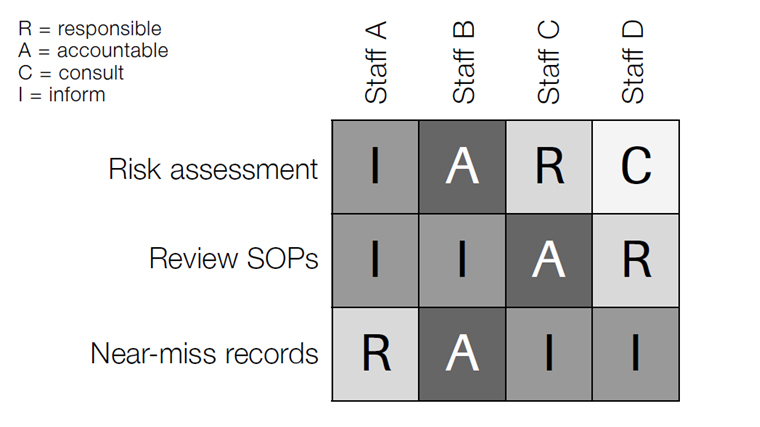Tracy runs a busy pharmacy in a small town. The pharmacy is well run and previous inspections have been very positive. She has started to prepare for inspection.
She has read the principles and standards and has used the framework to review the evidence she already has available. The majority of standards already have written evidence to support them, but a few areas need written evidence to be developed. A couple of elements of good practice have been overlooked.
Tracy has started to write an action plan to close these gaps. She arranges a meeting with all the pharmacy team to discuss inspection. Before this she prepares some information about why inspections are important, what they aim to achieve and what they should all expect.
She plans to explain what the inspector will want from them and what they will expect from all the members of the team. To give a clear idea of what the inspector might ask she has prepared a number of scenarios. Discussion of two of the scenarios identifies some further training needed with the team.
A couple of the counter staff knew they should refer dispensing errors to the pharmacist, but didn't really know what happened after that. During the discussion following a question about the near-miss log it becomes apparent that near-misses are not being recorded consistently. Both these are added to the action plan.
Tracy presents the draft action plan to her team for feedback. They discuss what needs to be done and identify some pieces of evidence that Tracy has overlooked. They agree who will be responsible for individual actions and plan a follow-up meeting in four weeks' time.
At the end of the meeting Tracy asks everyone how they feel about inspections now. Overall, they are still nervous because they feel like it will be a test, but they are much less concerned about it now and are confident that they are already doing the right things.
Develop an action plan
Once you have identified all the evidence you already have in the pharmacy you are likely to have identified some gaps and areas where you can strengthen the evidence available. If we reflect on the fundamental aim of the inspection process, it is to ensure the safety and protection of the public. Undertaking an audit and building an action plan based upon it is a fundamental task in delivering this aim.
The action plan in itself is very positive evidence to support the inspection outcome. The action plan should contain a list of all the tasks that will meet evidence gaps or further support the evidence already available. It could also include regular tasks that will form part of the evidence such as regular review of SOPs.
This should be prioritised to ensure that the most needed evidence is completed first. Each item should also have a deadline and an owner, someone who will ensure it is completed.
RACI
A RACI grid is a useful tool to help to ensure tasks are completed effectively. RACI is an acronym for responsible, accountable, consult and inform.
A tasks list is produced with deadlines for each task. For each task members of the team are allocated roles as:
- Responsible €“ the people who are going to do the work
- Accountable €“ the people who ensure it happens
- Consult €“ stakeholders or people whose ideas will be important
- Inform €“ the people who need to be kept informed.
Using a tool like RACI, the whole team understand their roles in delivering the action plan.
Defining team responsibilities

SOPs review
The availability of good quality SOPs are vitally important to a successful inspection.
- When was the last time you reviewed your SOPs to make sure they are appropriate?
- When was the last time you audited them to make sure they were being followed? Create a plan to review and audit all your SOPs over the next six weeks.
Discuss inspections as a team
The pharmacy team delivers quality in the pharmacy by working together.
Ask individual members of your team what they know about inspections and how they feel about them. Plan a short briefing to ensure every member of the team understands their role in the inspection process.
